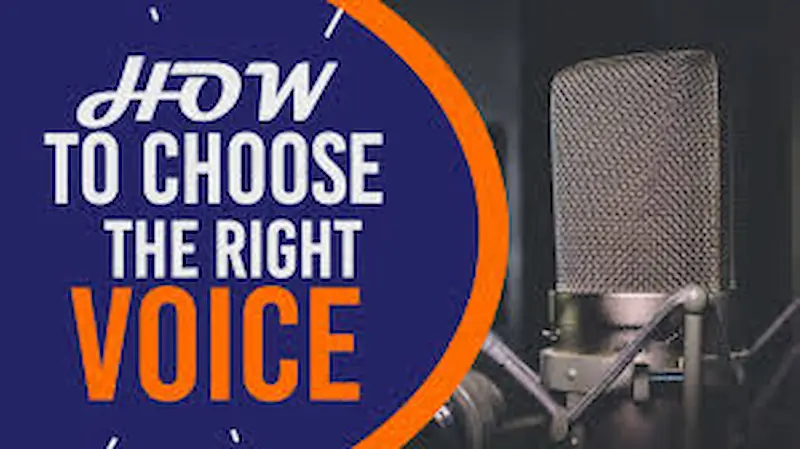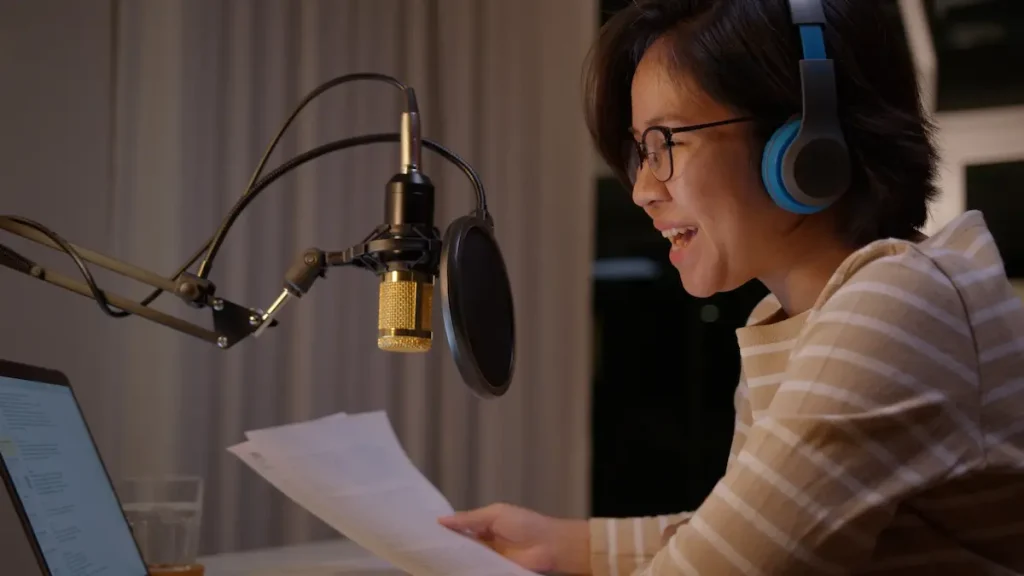When you watch a video — whether it’s a movie trailer, YouTube vlog, explainer, or documentary — there’s one element that often determines how you feel about it: the video voice. It’s not just about what you see; it’s about what you hear. The tone, rhythm, and emotion of a voice can completely change how you perceive a video.
A well-chosen video voice adds emotion, clarity, and professionalism. It turns silent visuals into engaging stories that stick in people’s minds. Let’s explore what makes video voice such a powerful tool in today’s digital storytelling world.
What Is a Video Voice?

The term video voice refers to the narration, dialogue, or voiceover that accompanies a video. It gives meaning to visuals by explaining what’s happening, adding context, and influencing how viewers interpret the story.
Every type of video — from marketing campaigns and tutorials to films and social media clips — uses a specific video voice to connect with its target audience. For instance:
- A corporate video might use a calm, confident voice to inspire trust.
- A vlog could use a casual, friendly tone to feel relatable.
- A documentary might use a deep, narrative voice to add authority and drama.
The video voice isn’t just about sound — it’s about emotion, personality, and storytelling.
You may also like it:
7 Best Wallpaper Banane Wala Apps- A Unique Guide – Aarya Editz
Lightroom Scanner – Digitize Photos With Pro Quality – Aarya Editz
Stunning LR Photo Editing Presets Download – Aarya Editz
Best Photo Banane Wala Apps Free Download – Aarya Editz
Why a Good Video Voice Matters
- Brings Clarity and Understanding
Without a voice, visuals alone might confuse viewers. A clear voiceover explains concepts, guides the audience, and simplifies messages — especially in explainer or product videos. - Creates Emotional Connection
Emotions are what make videos memorable. A skilled narrator can make viewers laugh, cry, or feel inspired simply through tone and pacing. - Builds Brand Personality
Your video voice becomes a reflection of your brand identity. For example, a luxury brand may use a smooth and elegant voice, while a youthful brand may prefer something vibrant and upbeat. - Improves Engagement and Retention
A dynamic, expressive voice keeps viewers watching longer. In contrast, flat or robotic delivery can cause people to lose interest quickly. - Boosts Professional Appeal
A professional-quality voiceover adds polish and credibility. Even with basic visuals, a strong voice makes your content feel premium and trustworthy.
Types of Video Voices
Different projects require different types of voices. Choosing the right one can dramatically influence how your message is received.
1. Narrative Voice
Used in documentaries, films, and storytelling videos. It sets the mood and helps audiences emotionally connect to the story.
2. Commercial Voice
Energetic, persuasive, and often dramatic — this voice is designed to grab attention and convince viewers to act (buy, subscribe, or visit a website).
3. Instructional or Educational Voice
Clear, calm, and friendly — ideal for tutorials, training videos, and e-learning content. It focuses on understanding rather than entertainment.
4. Conversational Voice
Natural, approachable, and relaxed — perfect for vlogs, social media content, and influencer videos. It feels like you’re talking directly to the viewer.
5. Character Voice
Used in animations, gaming, and storytelling. Character voices can be funny, dramatic, or exaggerated — depending on the theme and target audience.
How to Choose the Right Video Voice

Selecting the ideal video voice is as important as writing your script. Here’s how to make the best choice:
- Define Your Audience
Who are you speaking to — teens, professionals, parents, or students? The audience determines whether your tone should be formal, casual, or playful. - Match Voice with Message
Your message should guide your choice. A motivational video may need a passionate voice, while an instructional video requires calmness. - Decide on Gender and Age Tone
A younger voice may feel energetic and modern, while a mature voice brings authority and reliability. - Consider Accent and Language
For global audiences, a neutral accent ensures clarity. But for local campaigns, regional accents can enhance relatability. - Do Test Recordings
Record short samples with different voices to see which connects best with your visuals and audience.
The Rise of AI Video Voices
With rapid advancements in technology, AI-generated video voices are now everywhere. Tools like text-to-speech generators can create realistic, human-like narrations in multiple languages and tones.
Benefits of AI Voices:
- Cost-effective and quick to produce.
- Available in various styles and accents.
- Easy to modify and re-record without hiring voice actors.
However, while AI voices have improved dramatically, they still lack the emotional nuance and authenticity that human voices provide. For high-impact videos — like films or commercials — human voices often perform better.
Tips for Recording a Perfect Video Voice
If you plan to record your own voice, follow these tips to ensure professional results:
- Use Quality Equipment:
Invest in a good microphone and soundproof your recording area to avoid background noise. - Warm Up Your Voice:
Practice speaking clearly and steadily before recording to maintain consistency. - Maintain a Natural Pace:
Don’t rush. A comfortable speaking rhythm helps viewers follow along easily. - Control Your Breathing:
Breathe naturally and avoid heavy breathing sounds between sentences. - Edit Professionally:
Use audio editing software to remove noise, adjust pitch, and balance the overall sound quality. - Match the Energy of the Visuals:
Your voice tone should reflect the mood of the visuals — energetic for action, calm for explanations, and warm for emotional moments.
Real-Life Examples of Video Voice Impact
- YouTube Channels: Creators like educational YouTubers rely heavily on a conversational and friendly video voice to explain complex ideas.
- Advertising: A well-known brand ad with a powerful narrator can boost emotional impact and drive sales.
- Documentaries: Deep, narrative voices add gravity to historical and environmental storytelling.
- Corporate Videos: Calm, confident voices establish professionalism and brand trust.
Conclusion
A video voice is more than just sound — it’s the emotional bridge between your visuals and your viewers. It transforms your message into a story, your visuals into emotions, and your brand into a personality.
Whether you use a professional actor, record your own, or experiment with AI-generated voices, remember: the right video voice doesn’t just tell your story — it makes people feel it.
FAQs
Q1: What is the purpose of a video voice?
It enhances communication, adds emotion, and helps viewers connect more deeply with the content.
Q2: Is an AI-generated video voice effective?
Yes, AI voices are great for simple videos, but human voices remain better for emotional and storytelling projects.
Q3: Can I use my own voice for videos?
Absolutely! With practice and the right recording tools, you can record your own professional-sounding video voice.
Q4: What tone should I use for marketing videos?
A friendly, confident, and persuasive tone usually works best for marketing videos.
